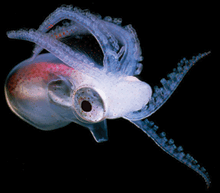 After my failed attempts at doing a large-scale periplasm prep right off the bat, I decided to spend this week going a bit more slowly. I repeated what others have already done successfully using radio-labeled DNA fragments as donors. This means that I can do smaller scale experiments and don't need particularly pure DNA.
After my failed attempts at doing a large-scale periplasm prep right off the bat, I decided to spend this week going a bit more slowly. I repeated what others have already done successfully using radio-labeled DNA fragments as donors. This means that I can do smaller scale experiments and don't need particularly pure DNA.And this time the experiments all worked. Here's what I did:
(1) I made competent cells of KW20 (RR722) and KW20 rec-2 (RR622). I confirmed that the wild-type strain transformed normally and the rec-2 strain not at all (or at least below my limit of detection). This confirmed that my competent cell preps were okay, and that the rec-2 strain seems to be correct.
(2) Following the DNA uptake assay protocol of Maughan and Redfield, 2009, I showed that USS-1 is taken up very well, but USS-R is only poorly taken up. To do this, I simply incubated ~12 ng of either radio-labeled USS-1 or USS-R with 0.5 ml of competent cells for 20 minutes, and then compared the radioactive counts in a washed cell pellet compared to the total counts:
 Wild type and rec-2 both take up USS-1 well, but USS-R poorly, as expected. But rec-2 seems to take up USS-1 slightly better than wild type. This is also true in the next experiment. This may be significant but could also reflect slight differences in the competent cell prep of the two strains.
Wild type and rec-2 both take up USS-1 well, but USS-R poorly, as expected. But rec-2 seems to take up USS-1 slightly better than wild type. This is also true in the next experiment. This may be significant but could also reflect slight differences in the competent cell prep of the two strains.Possibly the coolest part of this for me was that I got numbers that were spot-on the former post-doc's numbers (found in her notebook) and older papers describing % uptake. That is: ~65% uptake for ~20 ng / ml of cells. This was very encouraging to me.
(3) I repeated the uptake assay described above using ~12 ng USS-1 donor DNA and incubated wild-type and rec-2 cells for either 5 or 60 minutes. This gave results similar to those shown above:
 Most uptake was finished after only 5 mins, though additional incubation increased the level of uptake. The results were nearly identical for 60 min incubation as for 20 min incubation, so I don't need to do it for so long.. The rec-2 strain again showed slightly more uptake at all time points.
Most uptake was finished after only 5 mins, though additional incubation increased the level of uptake. The results were nearly identical for 60 min incubation as for 20 min incubation, so I don't need to do it for so long.. The rec-2 strain again showed slightly more uptake at all time points.After this, I took it a step further: I also extracted the DNA from the cell pellets and ran them out on a gel. I also included the input donor DNA as a control. I dried down the gel and exposed it to a phosphor screen. This is what the gel looked like:

Lane 1: Donor DNA (50% of input; ~6 ng)
Lane 2: Wild-type + USS-1 for 5 min. Total DNA.
Lane 3: Wild-type + USS-1 for 60 min. Total DNA.
Lane 4: rec-2 + USS-1 for 5 min. Total DNA.
Lane 5: rec-2 + USS-1 for 60 min. Total DNA.
Alright! That's exactly what I hoped for! (Well, not quantitatively between lanes: this was a sloppy first experiment.) The gel shows that the natural competence phenotypes of the two strains: wild-type and rec-2.
Intact uptake DNA is the smaller (lower) band, while chromosomal DNA is the high molecular weight species. In wild type, donor DNA gets degraded and nucleotides can be incorporated into the chromosome over time. (Importantly, the labeling of the chromosome is NOT from transformation, but from incorporation of degraded nucleotides into the genome by DNA replication.) In rec-2, the radio-labeled donor DNA is trapped in the periplasm and isn't degraded. So there is no chromosomal labeling in this case.
This is effectively a repeat of an experiment from Barouki and Smith, 1985.
Next, I'll try exactly the same thing, but I'll also try the extraction from Kahn et al., 1983. If this successfully yields pure periplasmic DNA, then I expect that the extraction will not yield radiolabeled chromosome, even for the wild type sample. If that works, I can work on scaling the protocol up to do a real purification of uptake DNA.
Onward!

No comments:
Post a Comment